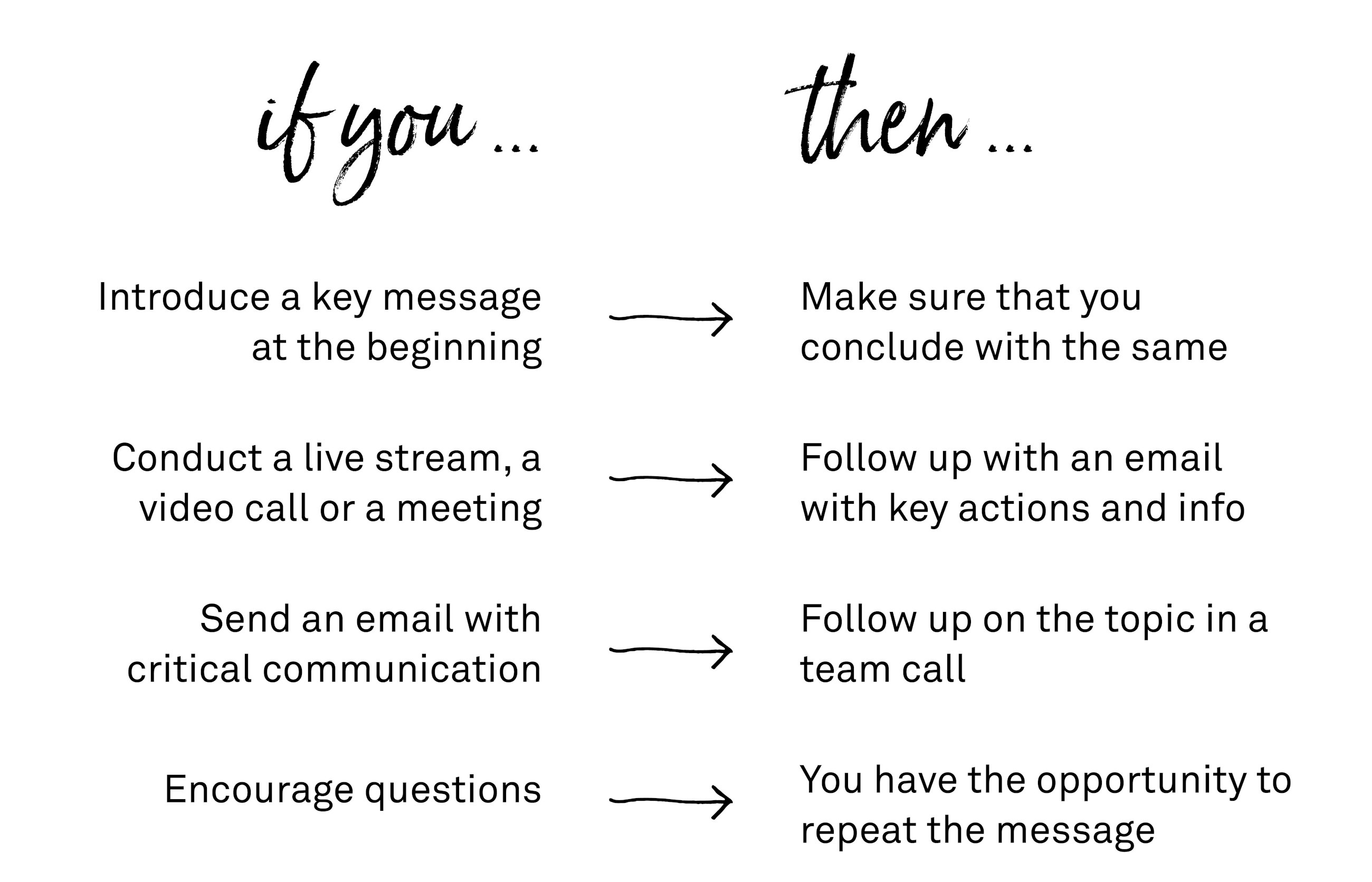How to get your message across while also making sure employees feel reassured
25 March 2020
COVID-19 has brought a lot of confusion and uncertainty, and when everything is in flux, we often forget even the most basic communication skills. We have gathered some insights and practical guidance on crisis communication to help you and your organisation navigate uncertainty.
From reactive to proactive measures
Crisis communication reinforces the rules of normal communication – being in tune with your audience. Crises are governed by emotions, so crisis communication is all about empathy and putting yourself in your audience’s shoes. This means moving away from reactive thinking and transitioning to proactive thinking. The more proactive you are, the more capacity you have to think ahead and envision your audience’s concerns. This requires firm rules and structures around how you communicate.
1. Use simple messaging
In a time of crisis, our mental capacity decreases – the mind is preoccupied, and we are in a state of fear. We are not able to digest or focus on a lot of information at once, and we have a tendency to read our fears and worries between the lines. We can mitigate this by keeping messaging short and simple. Aim for one key message per communication. Present this key message first and then elaborate on it and provide more details.
2. Establish a fixed rhythm of communication
Signalling credibility and structure is key to reassuring people in times of confusion. Set up a structure so people in your organisation know when they can expect information and updates. Ensure a clear understanding of who communicates what and when and remember to create space for informal touchpoints and two-way channels of communication. Creating a weekly communication plan can help ensure fixed and structured communication.
3. Use a consistent structure
A consistent communication structure will help your audience focus on what is important. Use a template or a recognisable format. Colour coding by message or theme could also be helpful for the audience, for example using different colour codes for health, commercial or financial updates or different colour codes for information updates and updates that require action.
4. Repeat the key message
We need to be exposed to a key message several times before remembering it – especially in a time of crisis when there is a lot of noise. Do not fall into the trap of believing people have understood your message just because you told them once. Make sure to revisit your message and conclusions by using different channels of communication. Encouraging questions also means you have an opportunity to repeat and add nuances to your key message.
5. Balanced communication
People’s anxiety often manifests itself as a desire to want more information, but this is often counterproductive. When the crisis erupts, we need to keep people informed about developments and what the business is doing to keep on top of things. But as time goes on, crisis-related content should be scaled down, and business-related content should be scaled back up. This balanced communication gives your audience reassurance that we are transitioning back to a state of normality.
Navigate the crisis with clarity
When communicating during the COVID-19 crisis, it is important to think proactively, keep your messaging short and communicate consistently at fixed intervals. If you can use the crisis as an opportunity to strengthen your corporate culture and exemplify your organisation as truly people-oriented, your employees and the organisation as a whole will emerge from the crisis with even more resilience.





